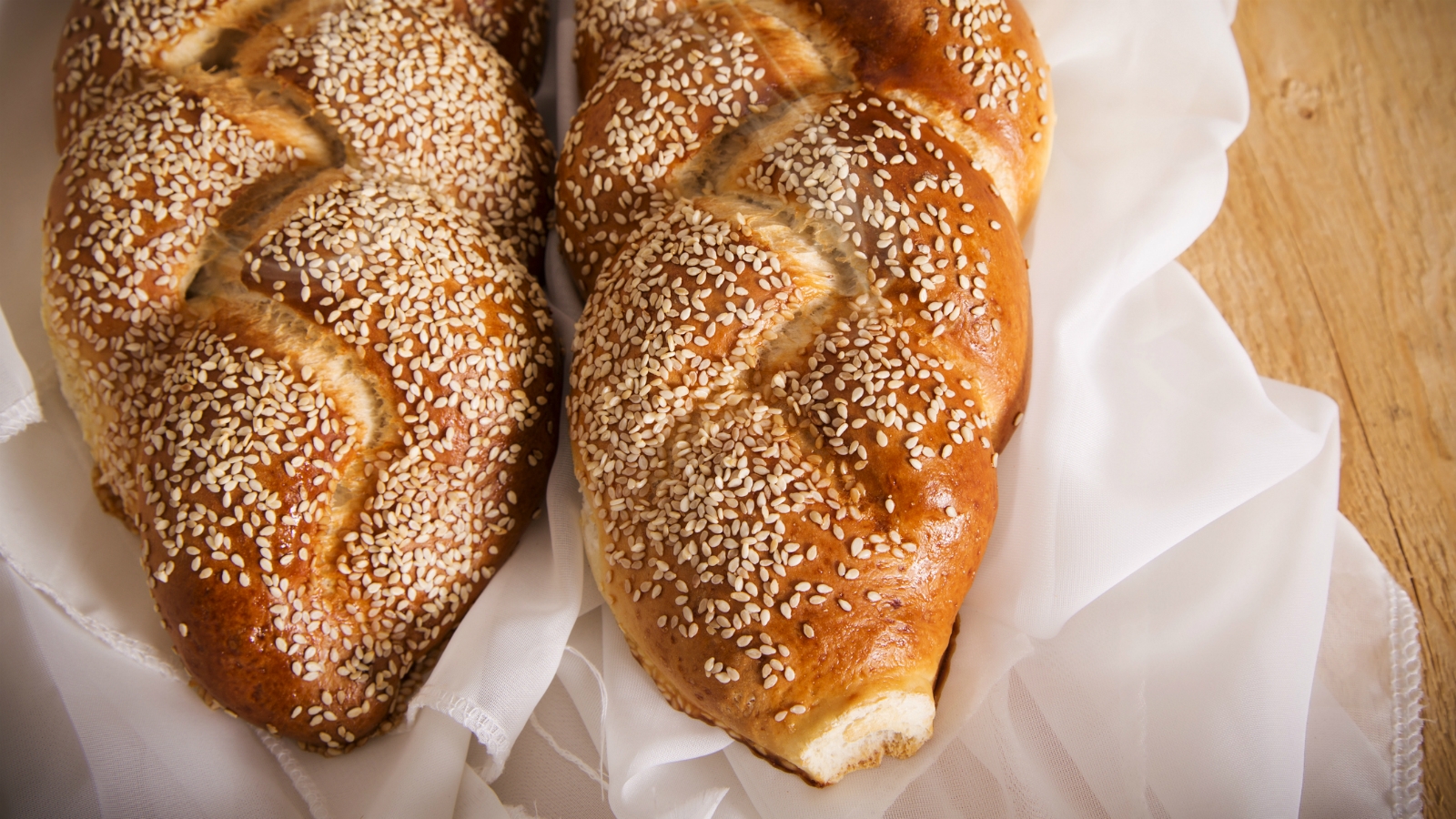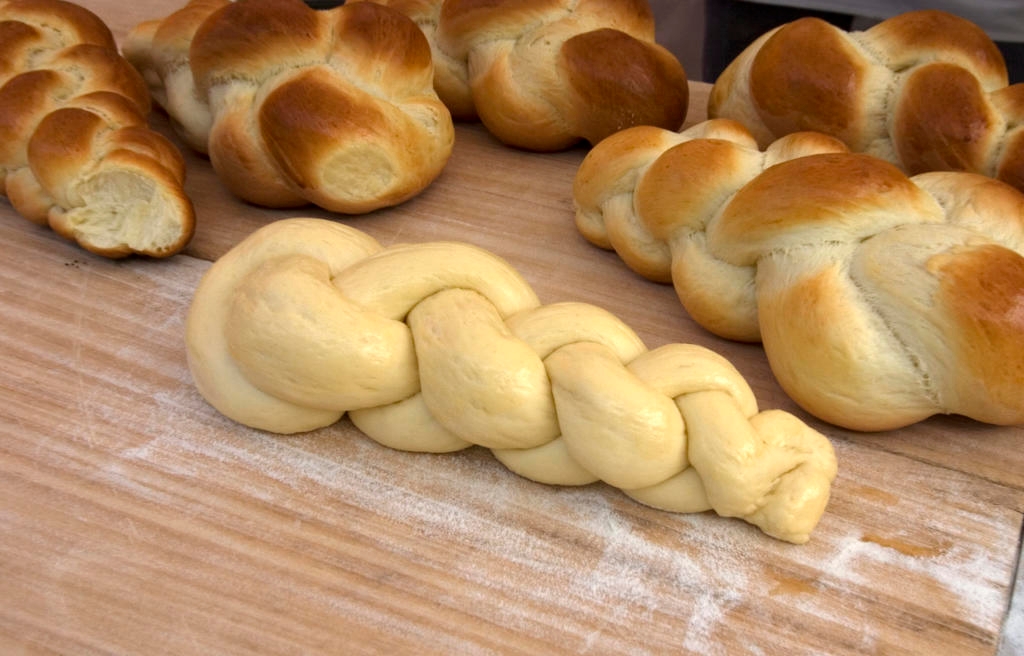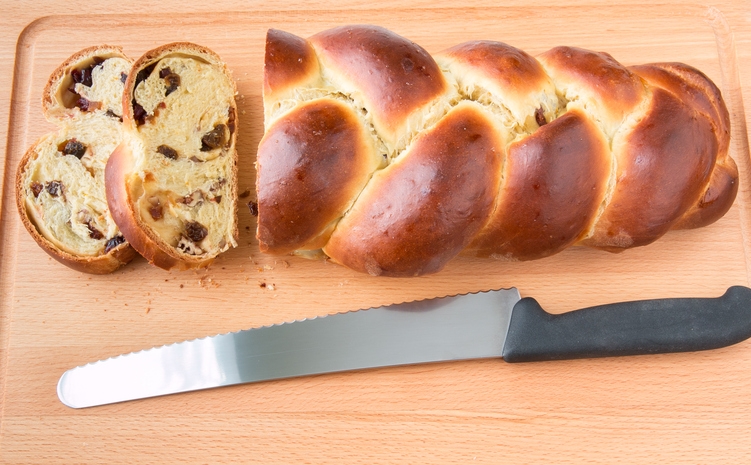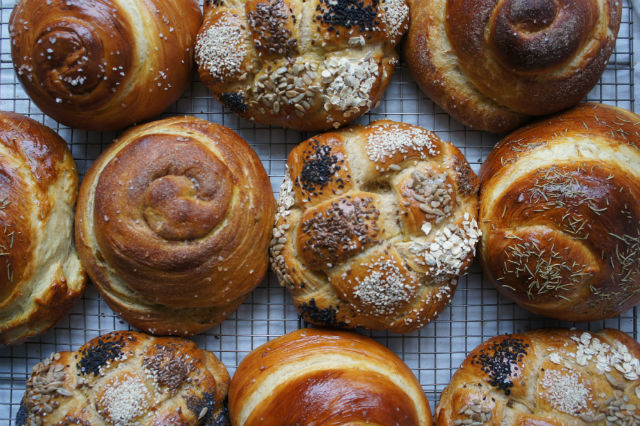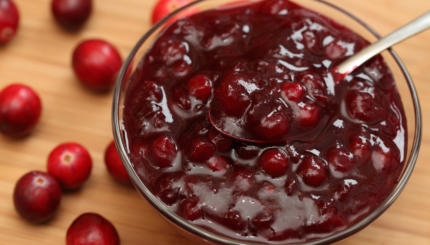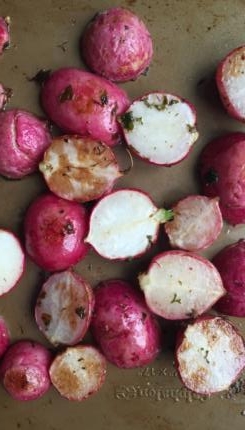Challah, soft and rich, brushed with egg wash, and woven into complex shapes or beautiful braids, is served in households around the world with Shabbat dinner. In many parts of the U.S. and Europe, challah appears more similar than different — golden, shiny, braided and perhaps dusted with poppy or sesame seeds. Sephardic loaves, on the other hand, take on different flavors, shapes and textures. How did Shabbat’s symbolic bread become the beloved rich and eggy braided loaf that’s baked and enjoyed by millions, worldwide?
The very first Shabbat loaves were far from the version we know today. The Hebrew word “challah,” as explained by The Forward, has many connotations including “roundness” and “hollow” and “with holes.” Taken together, the etymological clues suggest that biblical loaves were light and airy, and perhaps felt hollow when baked.
As Jews migrated, the recipes and the names for challah reflected the regional cuisine of places where Jews settled. Sephardic Jews used everyday flatbreads for their challah, for example. In Germany, the eggy, braided challah first emerged.
Food historian Gil Marks wrote in The Encylopedia of Jewish Food, that Austrian and southern German Jews began braiding their Shabbat loaves in the style of “berchisbrod,” a German bread named after the berches (braids) of “a malevolent demon, witch Holle.” They twisted and braided the dough to resemble a sacrifice of braided hair to ward off her wrath.
The Nosher celebrates the traditions and recipes that have brought Jews together for centuries. Donate today to keep The Nosher's stories and recipes accessible to all.
German Jews adopted this festive, braided loaf, discarded the mythology behind it, and called it “Berches,” which you can still find in German bakeries today. Made with just white flour, water and a pureed potato, (no eggs!) Berches has a tangy unsweetened taste, similar to sourdough. Berches was also called ‘vasser challah‘ (water challah), due to it’s simple taste and texture.
In 1488, the word “challah” was first used by scholars to describe the bread itself (previously, the only reference was biblical “taking challah”). Linguist Paul Wexler suggests that the term “challah” may have stuck because that “the braided German Holle bread sounded like the biblical challah.”
Gil Marks noted in his book that these braided loaves, made with expensive white flour and eventually enriched with eggs and oil, were a way of marking Shabbat bread as special and distinct from the dark rye loaves eaten during the week.
READ: Is Challah the Only Type of Bread Allowed for Shabbat?
From here, Berches (or Berkhes) made its way east to Hungary and west to France. By the 17th century, both the braided loaf and the names “challah” or “khale” and other local words related to khale, were embraced.
Challah was sweetened in the 19th century as a result of the innovation of sugar beet refining factories in Eastern Europe in 1806. Challah, along with several other Jewish foods, like noodle kugel, became sweeter in Polish regions that produced sugar.
By the 20th century, braided challah had taken on so many different styles and names — some challah had a braid on top, while other challah was sprinkled liberally with poppy seeds. Other than berkhes and khale, names for challah included datcher (German), kitke (as they called it in Lithuania, and today South Africa), and koylatsh (Poland and Russia).
When German Jews immigrated to the U.S., they made and sold “berches,” which was mentioned in an 1889 early American cookbook, according to Marks. It wasn’t until Eastern European Jews migrated to the U.S. that the term “khale” — specifically the eggy, sweetened variety of Eastern Europe — became ubiquitous. By 1920, the Hebrew spelling won out and “challah” entered mainstream American lexicon. Today, all Shabbat loaves are known as challah, with the exception of kitke bread in South Africa.
But what about Shabbat bread in other parts of the world? As braided challah found its way through Southern and Eastern Europe, Yemenite Jews were making flatbread called lachuch, and Indian Jews were baking naan or chapatis, which were baked in clay ovens. Meanwhile, according to The New York Times, Sephardic Jews enriched their loaves with olive oil, and added saffron, za’atar, orange flower or rose water, and studded their dough with dried fruit and nuts.
Challah, however you bake it, continues to play a central, delicious role in the rhythm of Jewish life. Through migration, diaspora, and agriculture, it became something just as diverse as the people who bake it every Friday.
Looking for a delicious challah recipe? Try one of our favorites, below, or click here for our full archive of challah recipes:
The Ultimate Gluten-Free Challah
challah
Pronounced: KHAH-luh, Origin: Hebrew, ceremonial bread eaten on Shabbat and Jewish holidays.

Help us keep Jewish knowledge accessible to millions of people around the world.
Your donation to My Jewish Learning fuels endless journeys of Jewish discovery. With your help, My Jewish Learning can continue to provide nonstop opportunities for learning, connection and growth.
Sephardic
Pronounced: seh-FAR-dik, Origin: Hebrew, describing Jews descending from the Jews of Spain.

Help us keep Jewish knowledge accessible to millions of people around the world.
Your donation to My Jewish Learning fuels endless journeys of Jewish discovery. With your help, My Jewish Learning can continue to provide nonstop opportunities for learning, connection and growth.
Shabbat
Pronounced: shuh-BAHT or shah-BAHT, Origin: Hebrew, the Sabbath, from sundown Friday to sundown Saturday.

Help us keep Jewish knowledge accessible to millions of people around the world.
Your donation to My Jewish Learning fuels endless journeys of Jewish discovery. With your help, My Jewish Learning can continue to provide nonstop opportunities for learning, connection and growth.
